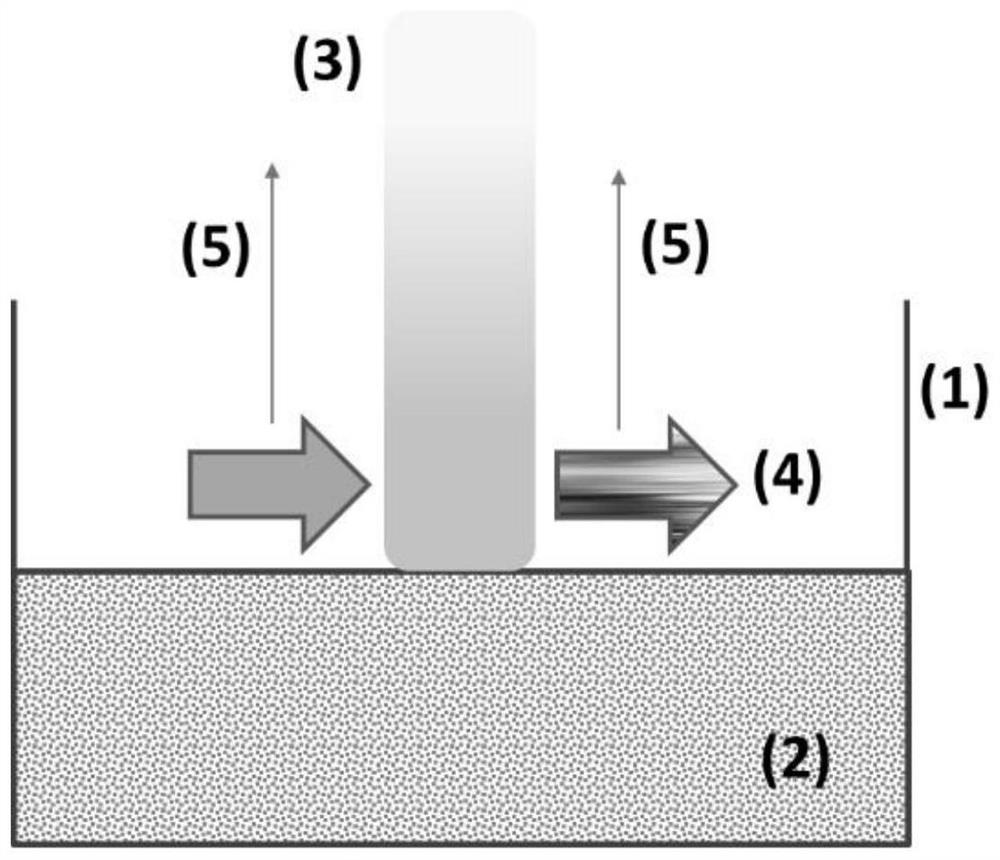A Method for Measuring Diffusion Coefficient of Porous Materials and Predicting Adsorption Capacity
A technology for porous materials and diffusion coefficients, applied in measuring devices, analytical materials, instruments, etc., can solve the problems of inapplicability of the measurement of the diffusion coefficients of porous materials, and achieve the effect of accurate and quantitative measurement of diffusion coefficients, and the method is simple and easy
- Summary
- Abstract
- Description
- Claims
- Application Information
AI Technical Summary
Problems solved by technology
Method used
Image
Examples
Embodiment 1
[0051] In the container to be tested, the volume of the adhesive solution is much larger than the volume of the porous material, which can be considered that the concentration of the absorbent solution is substantially constant, maintained at C. 0 .
[0052] The concentrations c (x, t) at different times and different locations are tested by spectral method, and multi-set value is recorded, and three-dimensional graphics are drawn.
[0053] Through Phi-second law, the concentration under one-dimensional diffusion conditions of fixed initial concentrations with X and T regulations are determined by the following complementary error functions, as shown in the formula (1):
[0054]
[0055] The complementary error function can be expanded through the Taylor level to retain 2 as an example, and the concentration C is approximated as the equation (2):
[0056]
[0057] As 0 In the case of determining, the value of the diffusion coefficient D can be fitted to the value of the multi-...
Embodiment 2
[0064] Place a trihydroxy-tuberculous solution into a container, the volume of the adhesive solution is much larger than the volume of the porous material, which can be considered that the concentration of the adhesion solution is substantially constant, maintained at C. 0 .
[0065] The concentrations c (x, t) at different times and different locations are tested by spectral method, and multi-set value is recorded, and three-dimensional graphics are drawn.
[0066] Through Phich's second law, the concentration under one-dimensional diffusion conditions of fixed initial concentrations is determined by the following complementary error function as follows. The complementary error function can be expanded by the Taylor level, after 2 items, by the above-described multi-group C-T data, the value of the diffusion coefficient D can be fitted.
[0067] The diffusion quality in this embodiment is a trihydroxybone, the solvent is ethanol, which is fixed to 0.3 mol / L, the porous material...
Embodiment 3
[0070] In the case where the solution to be tested is placed into the container, the volume of the adhesion solution is much larger than the volume of the porous material, which can be considered that the concentration of the adhesion solution is substantially unchanged and maintained at C. 0 .
[0071] The concentrations c (x, t) at different times and different locations are tested by spectral method, and multi-set value is recorded, and three-dimensional graphics are drawn.
[0072] Through Phich's second law, the concentration under one-dimensional diffusion conditions of fixed initial concentrations is determined by the following complementary error function as follows. The complementary error function can be expanded by the Taylor level, after 2 items, by the above-described multi-group C-T data, the value of the diffusion coefficient D can be fitted.
[0073] The diffusion quality in this embodiment is Cucl 2 The solvent is water, and its fixed initial concentration is 0.3 ...
PUM
 Login to View More
Login to View More Abstract
Description
Claims
Application Information
 Login to View More
Login to View More - R&D
- Intellectual Property
- Life Sciences
- Materials
- Tech Scout
- Unparalleled Data Quality
- Higher Quality Content
- 60% Fewer Hallucinations
Browse by: Latest US Patents, China's latest patents, Technical Efficacy Thesaurus, Application Domain, Technology Topic, Popular Technical Reports.
© 2025 PatSnap. All rights reserved.Legal|Privacy policy|Modern Slavery Act Transparency Statement|Sitemap|About US| Contact US: help@patsnap.com



